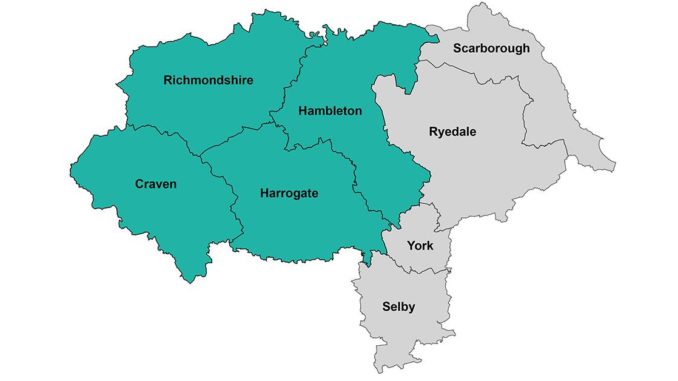
Hambleton would join with Richmondshire, Craven and Harrogate in a devolution plan put forward by North Yorkshire’s district councils.
North Yorkshire’s seven district councils have put forward their plan to rival the creation of one “mega council” for the whole county.
Local leaders in North Yorkshire were told by the government earlier this year that in order to unlock a devolution deal, the biggest shake-up in local government for decades would have to take place and one or more unitary authorities created.
Plans already put forward by North Yorkshire County Council would see one overarching unitary authority created for the whole county, with the exception of the City of York which would be left intact.
The district leaders have argued this would be too large, and have now instead proposed an east/west divide and the creation of two unitary authorities.
In the west Harrogate, Craven, Hambleton, and Richmondshire would join together to cover around 360,000 people, while in the east, Ryedale, Scarborough, Selby, and York would do the same.
A joint statement from the leaders said: “While not every leader supports change at this chaotic time, the government wants change and the county council has confirmed it will push ahead with its unpopular ‘mega council’ proposal.
“Therefore, if change is coming, all seven of us – Conservative, Labour and
Independent – stand united and determined to work together to get this change right.
“We want the best councils for North Yorkshire and York.
“From an initial long-list of ten options, the evidence so far shows that one performs most strongly, with significant advantages over the ‘mega council’ model.”
While the county council has raised concerns over the disruption that could be caused by splitting North Yorkshire in two, the district leaders believe the east/west councils would be “large enough to be efficient into the future, but small enough to keep connected with our communities.”
And they say that work commissioned by them from consultants KPMG shows that this model is likely to deliver significant financial and democratic advantages.
The statement added: “The research shows our model will likely achieve greater financial savings in the long-term, stronger democracy and more effective services, while best delivering the Government’s devolution agenda.
“Overall, the model delivers two authorities large enough to be efficient into the future, but small enough to keep connected with our communities.”


Be the first to comment